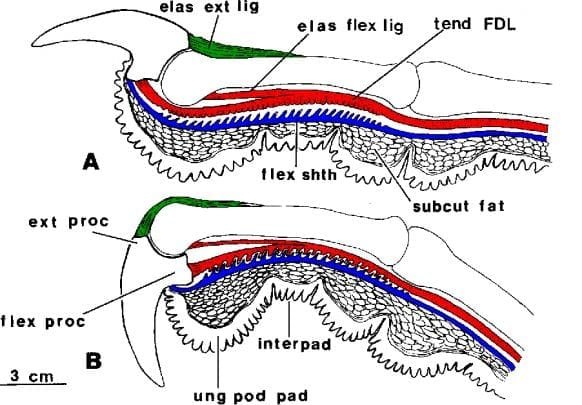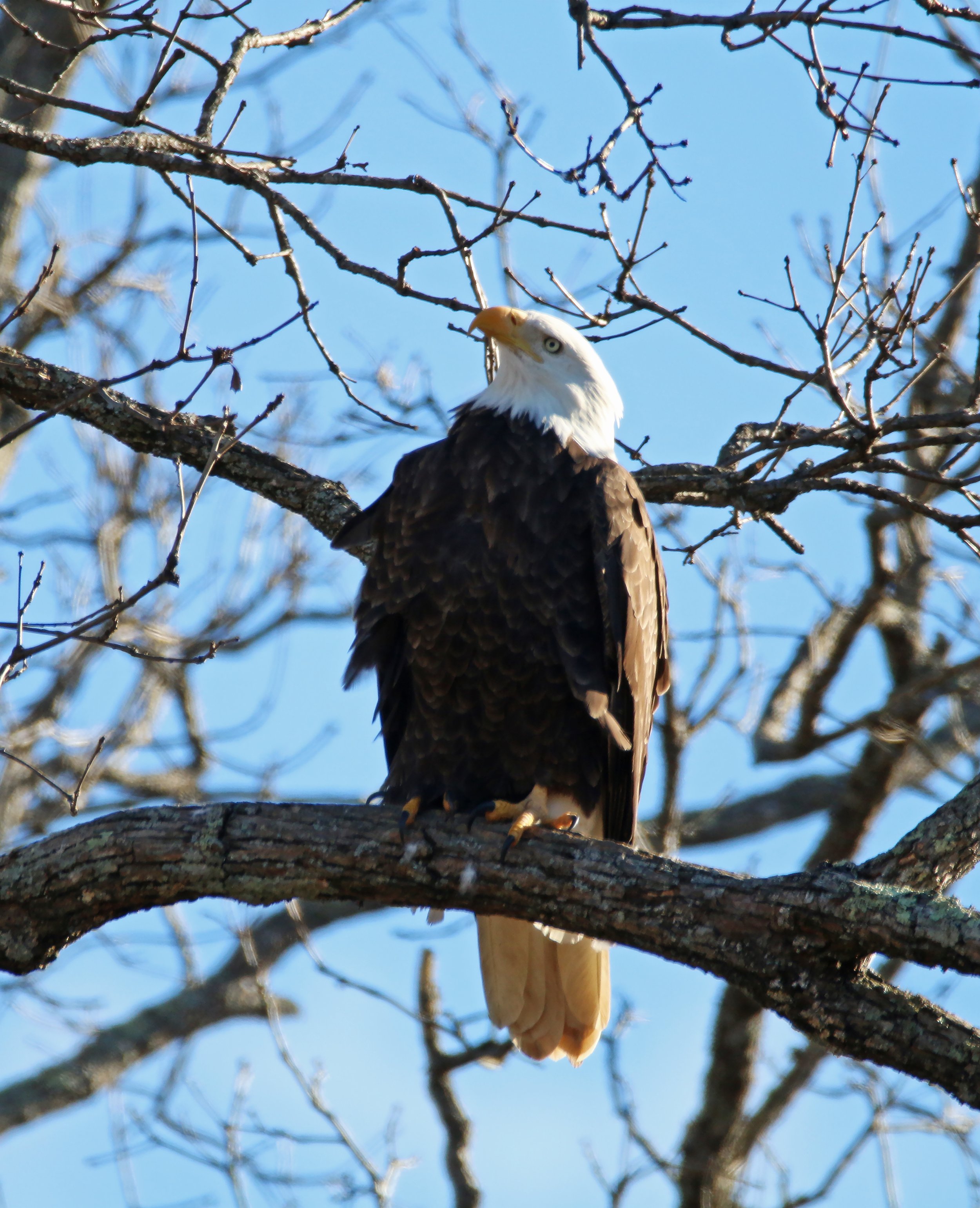On Monday December 5, I was called in to break up a fight. But this wasn’t an ordinary argument—it was between two Bald Eagles that had become entangled so completely that they were stuck together on the ground in front of Arlington Agricultural Research Station’s (UW Farms) Beef Cattle Grazing buildings, about half a mile south of Goose Pond.
Mark Martin, Goose Pond resident sanctuary manager, received a text from Mike Bergstrom, superintendent of UW Farms, saying he was notified about the birds by employee Tony Ziehmke. At first, Ziehmke saw from a long distance what looked like a large piece of plastic laying in the lawn, but upon closer inspection, he was surprised to see that the plastic “garbage” or “lawn ornaments” were actually two adult eagles. We are grateful that Ziehmke took the time to investigate the situation and report it to Bergstrom, so the eagles could get the help they needed.
Mark asked me to check if the eagles were still there or if they were injured. He commented on how unusual it was that two Bald Eagles would be laying on the ground together, and suggested that they may require the help of a wildlife rehabilitator. It did not take long to find the eagles once I arrived at UW Farms: they were laying there, exactly as described, in the same place they had been first seen.
Two Bald Eagles with entangled legs on the ground at UW Farms on December 5, 2022 (photo by Emma Raasch).
By the time I got there, three employees had already called the Wisconsin DNR and were referred to Hoo’s Woods Raptor Center for advice. I spoke with Dianne Moller, director and founder of the center, and she suggested that the two eagles, likely males, were fighting over food or territory and had intertwined their talons and fell from the sky. As unusual as this sounds, this is a consequence of normal eagle behavior and physiology.
Whether for courtship rituals or battles over territory or food, eagles are no stranger to mid air talon-to-talon contact. While courting, male and female Bald Eagles will lock their talons together, wings outstretched, and twirl through the sky together. Fighting eagles, most commonly males, will interlock talons, but in a much less cohesive manner. During battle, each eagle will try to get an advantage over the other by flying above it, however, the other eagle will struggle to reverse the advantage in their own favor. With their talons entangled, it may be difficult to keep their wings open, and the thought of winning the territory or food item may overpower the instinct to stay in the air, so they fall. Incidents like these are more common in early winter when males compete for nesting territory.
This diagram shows how the tendon (red) and sheath (blue) interlock when a bird’s foot is closed (image courtesy of the Raptor Resource Project).
Once they hit the ground, the birds may be injured or simply stunned, but they remain tightly locked together. The eagles are not held together over sheer stubbornness but by an inability to release their grip on one another. Like other raptors, eagles’ feet and talons work like a ratcheting system, which allows them to keep their grip for long periods of time without exerting as much energy. The tendons in eagles’ legs are contained in sheaths, both the tendons and the sheaths have ridges on them which interlock when the bird grasps something. This mechanism means that eagles must use energy to open their talons, but not to keep them closed. To learn more about this adaptation, check out this article from the Raptor Resource Project.
Dianne suggested I try to take a picture of the eagles to assess whether they were injured and how we should proceed. I snuck up slowly, hiding behind trees in the hopes of not startling them, and sent the picture. She told me that the photo reminded her of other eagle incidents she has heard of in Wisconsin recently, and her prediction was correct: their talons were stuck together. Eagles can sometimes get themselves out of their predicament, but some may still require care from the fall. Last year in Spooner, WI, two Bald Eagles were found tangled together in a body of water. A local volunteer found the eagles, but by the time he returned with his waders, the eagles had separated; one required treatment and was sent to Winged Freedom Raptor Hospital.
Bald Eagle (photo by USFWS Midwest).
Dianne also told us we needed to be extremely careful to avoid injury to the eagles and ourselves, and to approach them and put a blanket or tarp over them to keep them calm them before attempting to manually detangle them. She also mentioned that a human approaching may startle them enough to let go and fly away on their own—luckily for us, that is exactly what happened! They both flew away immediately and looked to be in good bodily condition. We were all relieved that the eagles were okay, and that we wouldn’t need to risk getting close to dangerous raptor talons on a Monday morning!
Big thank you to Dianne for her expert opinion and immediate response to our calls. To learn more about Hoo’s Woods Raptor Center, find them on Facebook.
Wildlife rehabilitators may not be able to be everywhere at once (physically, anyways), but I am grateful for people like her, who are ready at a moment’s notice to talk someone through what to do when wildlife is in need. If you find a sick or injured animal, contact a rehabilitator for advice. Find your local wildlife rehabilitators in this directory from the Wisconsin DNR.
Written by Emma Raasch, Goose Pond Sanctuary ecological restoration technician
Cover image: A juvenile Bald Eagle stretches out long talons as it reaches for a branch (Madison Audubon photo).








